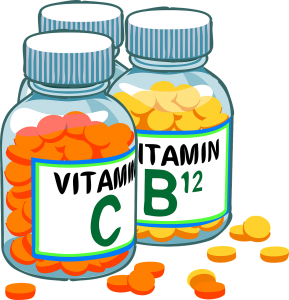
Listen to this blog in less than 6 minutes here.
Nutrients in Health and Disease
Any doctor is aware that practicing good medicine does not consist of giving people a drug, supplement, or anything for that matter, haphazardly without analyzing the need for it. Most pharmaceuticals are designed to manipulate a distinct biochemical pathway in order to produce an intended, specific effect. The very nature of “skewing” one side of a physiological process in favor of another can often create “side effects.” This can range from barely noticeable nuisances to death. Therefore, evaluating benefit, risk, and need is imperative in prescribing.
Nutrients are different than medications. We need to obtain them from external sources, through food, as the body cannot produce them on its own. They exist within us in a delicate balance and are necessary for functioning and thriving.
The impact that nutrients have on health has been acknowledged internationally by a very comprehensive report. This review was issued by a Joint WHO/FAO Expert Consultation that analyzed the evidence on the effects of diet and nutrition on chronic diseases in order to make recommendations for public health policies and strategies. The long report can be found here – http://www.fao.org/WAIRDOCS/WHO/AC911E/AC911E00.HTM.
Most people are more often insufficient in more than one, not in a single, isolated factor. Some reasons for these deficiencies include:
- eating diets of processed foods and/or chronic restrictive dieting
- toxin exposure
- genetic variances in efficiency in utilization
- conditions of insufficient absorption
- the world’s declining soil levels
For all of the above reasons, and due to the fact that they are necessary for life, many choose to supplement vitamins, minerals, and other essential nutrients to an optimal level. This is in order to maintain health and prevent symptoms arising from specific deficiencies. (1, 2, 3)
Although need is automatically assumed, quantity and source of these vital building blocks is a very controversial subject. Most of the risk for taking vitamins and mineral supplements is associated with trials that prescribed large doses of single nutrients, in a diseased or general population, without assessing the need for it first. Consideration of the balance of one mineral and/or vitamin with the others, via a synergistic formula, will create more favorable outcomes.
I will discuss this in more detail below and in a future blog.
How Much is Enough of Nutrients?

Currently, the guidelines for recommended amounts of nutrients are based on what is minimally required to prevent disease in the general population, based on age and gender. They are not intended to be levels which support optimal wellness for individuals with different biochemical makeups and needs. Due to the fact that they are based on already healthy individuals, these suggestions also do not consider the higher need for them during chronic or acute disease processes.
The National Institute of Health (NIH) states:
Recommended Intakes
Intake recommendations for calcium and other nutrients are provided in the Dietary Reference Intakes (DRIs) developed by the Food and Nutrition Board (FNB) at the Institute of Medicine of the National Academies (formerly National Academy of Sciences) [1]. DRI is the general term for a set of reference values used for planning and assessing the nutrient intakes of healthy people. These values, which vary by age and gender, include:
- Recommended Dietary Allowance (RDA): average daily level of intake sufficient to meet the nutrient requirements of nearly all (97%–98%) healthy individuals.
- Adequate Intake (AI): established when evidence is insufficient to develop an RDA and is set at a level assumed to ensure nutritional adequacy.
- Estimated Average Requirement (EAR): average daily level of intake estimated to meet the requirements of 50% of healthy individuals. It is usually used to assess the adequacy of nutrient intakes in populations but not individuals.
- Tolerable Upper Intake Level (UL): maximum daily intake unlikely to cause adverse health effects [1].
The FNB established RDAs for the amounts of calcium required for bone health and to maintain adequate rates of calcium retention in healthy people.
In my homepage blog this week I discuss, “Calcium for Bones…the Less Than Half Truth.” You can read that here.
Next week, I’ll review why, if so many people are in need of nutrient support, studies have reported inconsistent confusing, and conflicting conclusions on their benefits and risks.
Thanks Pixabay!




Useful Post! As we know Vitamins and minerals are considered essential nutrients to one’s health. So, One’s have to take the nutritional supplements to make sure they get enough essential nutrients.
DeFlame.com is also devoted to nutritional supplements and other lifestyle approaches for reducing inflammation. You have the opportunity to acquire nutritional supplements being made to drug specifications by a pharmaceutical manufacturer for Health Promotion.
For more information, Visit: http://www.deflame.com/